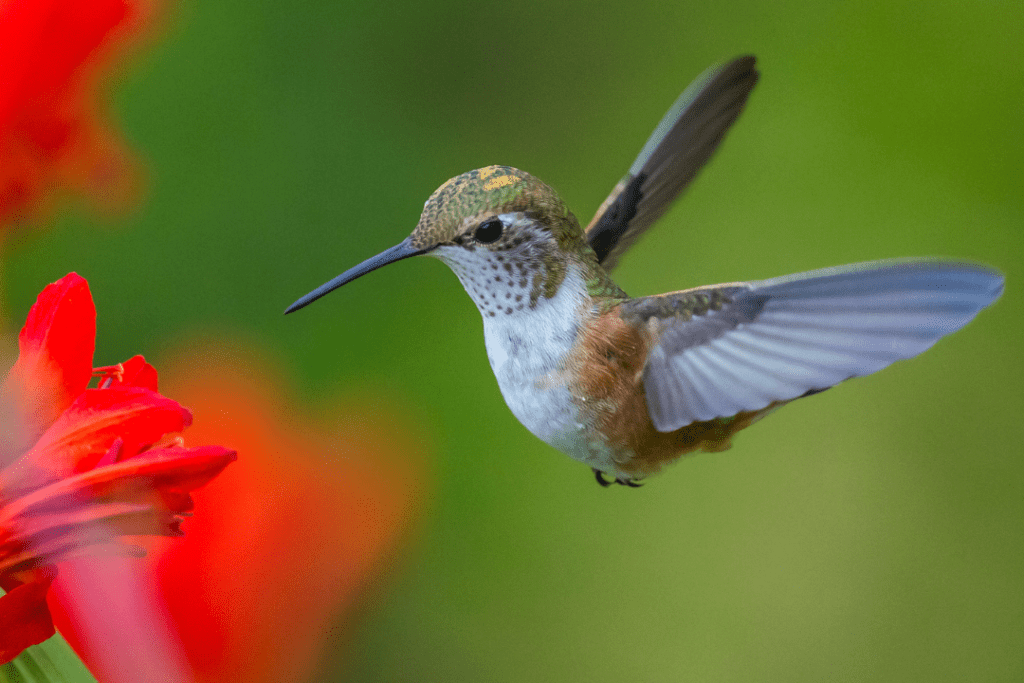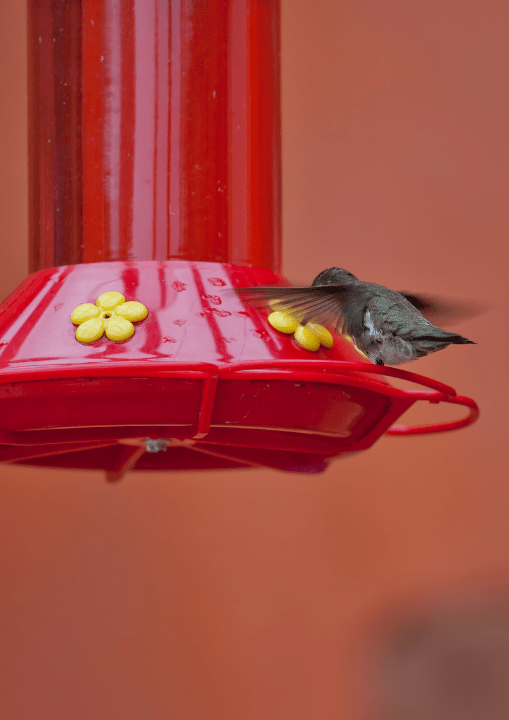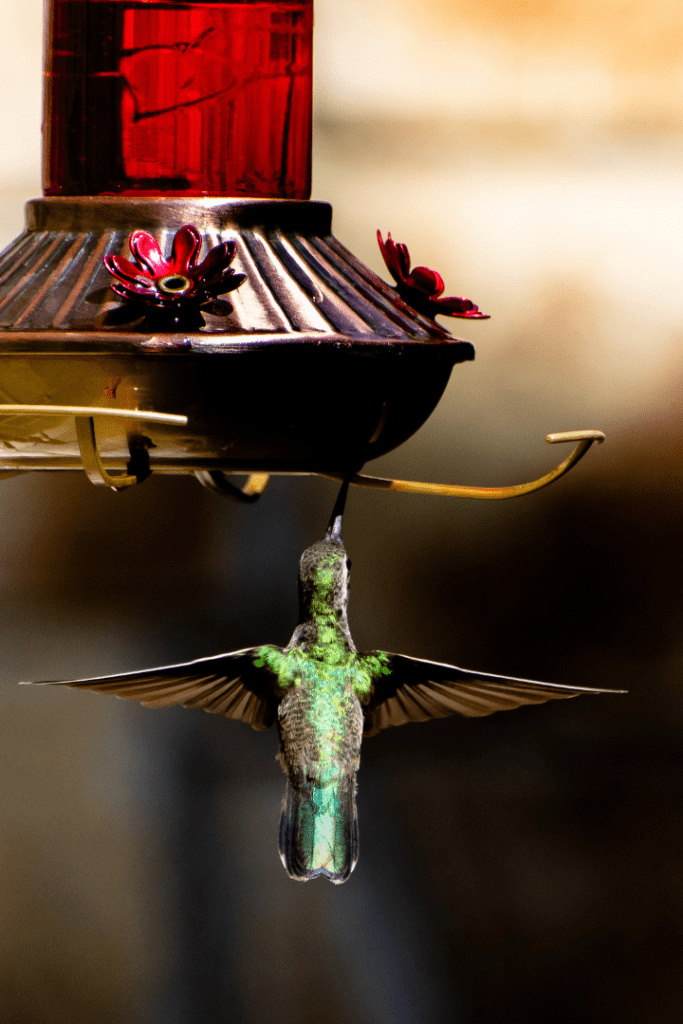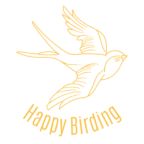Hummingbirds aren’t typical birds, and they don’t eat from typical birdfeeders. To provide calories for hummingbirds, you’ll need a special feeder that was made just for them.
Hummingbird wings can perform a few dozen flaps in the time it takes you to blink your eyes. To fuel their crazy metabolisms, some hummingbirds consume more than their body weight in food per day.

Friendly humans lend a hand by setting up liquid nectar feeders. The standard food that’s provided in hummingbird feeders is a simple solution of sugar and water.
While hummingbird food recipes often call for heating or boiling, sugar can completely dissolve in water without the use of heat.
If you’re interested in feeding your yard’s smallest birds, and you’d rather skip the boiling water, this guide is for you.
Let’s learn:
- What do hummingbirds eat?
- How to provide food for hummingbirds
- How to make hummingbird food without boiling water
What Do Hummingbirds Eat?

Regarding physical attributes and eating habits, hummingbirds are in a league of their own.
Some species can beat their wings up to 80 times per second. Their tiny hearts can reach rates of 1,260 bpm, while their tiny lungs take around 250 breaths per minute.
To fuel their one-of-a-kind athleticism, hummers consume, metabolize, and dispose of food and water at furious rates. Aside from some insects, no animal has a higher metabolism than a flying hummingbird.
Two primary food categories make up a hummingbird’s diet. For protein, a variety of insects are consumed, like spiders, gnats, mosquitos, and fruit flies. For extra energy, hummers drink nectar from flowers.
Providing Food for Hummingbirds
Providing a feeder is just one way to attract hummingbirds. Like most animals, hummingbirds appreciate a diverse environment that includes trees, water, varied types of vegetation, and lots of insects.
To invite hummingbirds to your property, install pollinator-friendly native plants along with a feeder.
Native Plants for Hummingbirds
As nectar sippers, hummingbirds love flowers.
Native plants usually provide better nectar quality than exotics or hybrids.
Which native plants are best for hummingbirds? That depends on your region. For reliable suggestions that apply to your area, check out these hummingbird plant guides by the US Forest Service, the Missouri Prairie Foundation, and the California Native Plant Society.
A few of the best plants for hummers in the Eastern US include trumpet honeysuckle and cardinal flower. In California, try sticky monkeyflower, scarlet bugler, or manzanitas.
You may have read that hummingbirds prefer red flowers. That’s true, but colorful variety is always the way to go for your native garden, and hummingbirds are happy to sample flowers of different colors.

Setting Up a Hummingbird Feeder
Traditional bird feeders dispense seeds and other morsels through feed holes or onto trays. Hummingbird feeders use the same basic setup to provide calories in liquid form.
A hummingbird feeder is typically a clear plastic container, filled with nectar (sugar water), with a perimeter of feeding port holes. There are two types: inverted feeders and saucer feeders.
An inverted feeder places a central nectar tank over a ring of feeding ports. As nectar is consumed, more flows down into the ports to keep them full.
A saucer feeder, or dish feeder, is a shallow, covered tray. Hummingbirds dip their bills into ports and sip directly from the nectar supply.
How to Make Hummingbird Food Without Boiling Water
While it’s okay to practice some thoughtful creativity and variety when feeding other backyard birds, you should keep things simple with hummingbirds.
There’s a tried and true recipe for hummingbird nectar. Hummers are sensitive and have very specific dietary needs. You could easily cause harm by providing nectar made with the wrong ingredients or ratio.
Here’s the recipe for hummingbird nectar:
- 1 part refined white sugar
- 4 parts water
For example, you can make a batch of nectar using 1 cup of sugar and 4 cups of water.
Stir the sugar into the water till it’s dissolved, and you’re all set. Your nectar should look clear, without any visible sugar particles.

Is There Any Reason to Boil the Water When You Make Hummingbird Nectar?
Some nectar brewers choose to heat or boil the water. Sugar does dissolve more quickly in hot water, but heat isn’t a necessity.
A bit of stirring is all you need to completely dissolve table sugar in room temperature water. In fact, if you boil off too much water, you’ll change your water:sugar ratio and end up with nectar that’s too thick and sugary.
It’s worth noting that some reputable birding sources do recommend boiling the water when making hummingbird food. Boiling purifies water by killing bacteria and pathogens.
The Smithsonian National Zoo specifically states that boiling the water is not necessary. Audubon’s recipe does include boiling water. The Cornell Lab, meanwhile, suggests boiling only when making large batches that you intend to store for later use.
Safely Providing Nectar for Hummingbirds
When making hummingbird nectar, only use refined white sugar, i.e. regular table sugar.
Never use brown sugar, honey, powdered sugar, raw sugar, or other sweeteners to make hummingbird nectar.
Don’t put anything in your nectar other than sugar and water. Red food dye is sometimes added, but it isn’t necessary and may be harmful. Hummingbird feeders are always made with some bright red coloring, which is all that’s needed to attract the birds.
Keep the following tips in mind when setting up and maintaining your feeder:
- Install your feeder away from windows or bird-proof your windows to avoid collisions
- If possible, set your feeder up around trees to provide shade and perches
- Replace your nectar every other day
- Thoroughly clean your feeder every time you replace the nectar
Most importantly, if you commit to maintaining a feeder, do your best to be consistent.
Hummingbirds are sensitive little creatures. Supporting the world’s fastest metabolism involves a delicate balance of energy inputs and outputs.
Once you begin feeding your local hummingbirds, you’ll become an important part of their lives. They’ll come back day after day, counting on some fresh nectar.
If you keep them happy, you’ll be rewarded with their presence. A yard full of hummingbirds is a vibrant, colorful place.

Kelly is an environmental science writer, naturalist, and birdwatcher. Kelly holds a master’s degree in environmental policy and has worked as an environmental analyst, urban planner, and professor of environmental planning.
